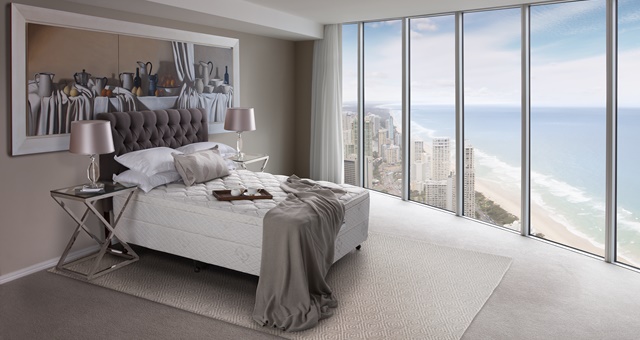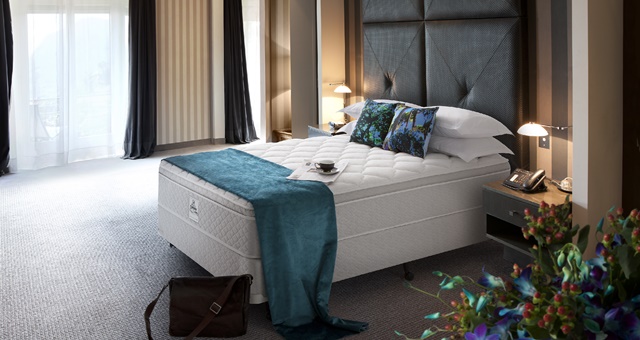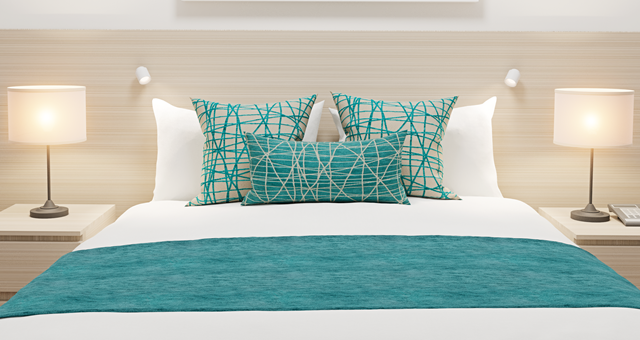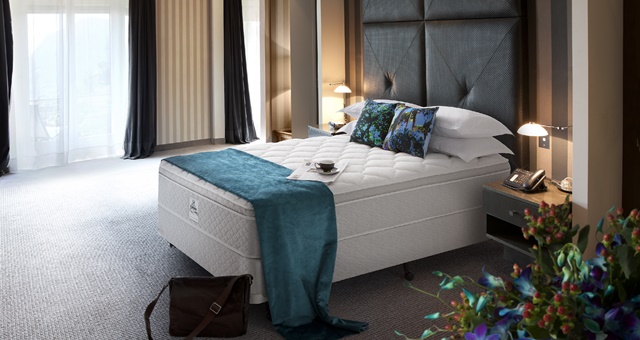
In years past, hotel beds were seen as a standard well above the reach of the common man. Now that the gap has closed to near nothing, hotels are taking steps to customise their beds to ensure they can reinstate that edge.
In a highly competitive hotel bedding marketplace, Australia’s leading bedding suppliers can never afford to go to sleep in terms of product development. Hotels are harsh mistresses and the time one supplier puts its head down on that comfortable pillow is the time they could miss out on an order.
It’s something of a double-edged sword. As bedding technology is improving seemingly with each passing year with truly noticeable innovations, so too are guest demands for a higher standard of comfort and higher quality of sleep. As guests demand more, hotels demand more. And bedding suppliers are keeping up, offering greater abilities for a client to customise their bedding order to suit evermore precise and specific needs.
Sealy National Commercial Accounts Manager, Melissa Starbuck, said the larger hotel groups were more frequently ordering a custom solution, including requesting the comfort level and height of their beds.
“A lot of the global groups are going toward deeper pillow tops around 30cm. I’ll give you an example. Say for instance, you have a global brand in the U.S. They might turn around and say: ‘We’ve selected Sealy as our bedding supplier and we want Sealy to be able to deliver that same specification to all our properties around the globe’.
“What we do is take that specification here in Australia and build a spring unit as dictated. In different countries and different regions, different foam manufacturers might make foam a little bit differently, so you have to take that into account. So what you work with is, to the best of your ability, you can re-make that specification as close to that global brand as you possibly can. So we can communicate those global specifications and get it right.”

Those in charge of ordering a bed from a supplier probably can’t be expected to be an expert in the matter, which is why companies such as Sealy and AH Beard offer highly specialised advice in line with a desired outcome. Hotels may choose from a variety of existing products, such as a catalogue of comfort levels. Sealy also manufactures four different spring levels, so if a hotel feels suitably confident, they can opt to virtually build their bed from the floor up, comfort by comfort, with many combinations possible.
AH Beard National Commercial Manager, Peter Deveny, said the most frequent question he was asked by clients was simply ‘what’s the best bed’? His response is always the same – select the bed that is going to suit the highest percentage of customers.
“If your guest mix, for instance, is going to be corporates, you don’t really want to have a big, fat, plush, five-star mattress because that’s just not what they’re looking for. Our advice is generally to pick a mattress that is going to suit what you’re trying to achieve with the property and what experience you want your guest to have.
“We’re seeing more customers offering guests the opportunity to purchase the bed. We run a number of very successful guest programs in conjunction with our hotel partners and the most successful is the Rydges ‘Dream Bed’ program. They sell a significant number of beds every year.”
Deveny added there was a big difference between trying a bed in a showroom, with people and sales assistants walking around, or a guest deciding to buy a bed from a hotel after they’ve had “the best night’s sleep in a year.
“We’re seeing a lot of properties wanting to leverage that advantage they have – not only from a revenue perspective but also from a branding perspective. Their bed becomes part of their marketing package.”

Climbing on top of the bed, another pertinent question hotels are asking themselves is ‘How important are the decorations on my bed’? While the surroundings in the room, including nearby furnishings, wallpaper, wall art or even the bed frame itself may have more of a factor, how much colour or decoration should a hotel apply to the bed itself?
Critical to any interior designer is a need for bed coverings not to distract from, but to complement the layout of a room in line with the hotel’s overall plan. Wider trends in hotel design – especially as lifestyle brands take centre stage – are seeing operators lean towards the more homely elements. But does this mean the outright and ostentatious displays of luxury are passé? Not so, says Erin Coman-Beckett from Hotel Home Australia.
“Downtown city or some larger provincial properties have gone to the “all white” look many years ago. This look can only be effective when professional housekeeping has the time required to deliver a 100% very slick and perfect presentation of the beds every time, but the reality is that it most often does not happen due to time constraints.
“The end result, is that most of these bed presentations are not up to scratch, they can look institutional and some degree of colour, texture and style needs to be added to the bed presentation to satisfy the guest, who may have seen a different look on the website.
“Many properties have gone away from the “all white” for a number of reasons and these properties have introduced bed runners and stylish cushions, which often coordinate with sofa cushions.”

